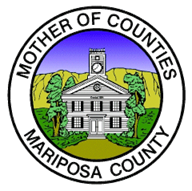After a Wildfire
Intro
The host of emotions following a disaster can leave one feeling overwhelmed and wondering what to do next. Wildfire recovery doesn't happen overnight. It is a steady process of assessing damage, evaluating new conditions, and deciding on what to do next. The ultimate goals of renewal, rehabilitation, and revegetation can be attained, but will take patience and persistence. The journey ahead is not easy, but the information provided here will help you get started.
- Take Care of Yourself: Contact your local disaster relief service, such as the Red Cross or the Salvation Army. They will help you find a place to stay, food, medicines, and other important things.
- Assess Home Damage: Check with the fire department to make sure your home is safe to enter. Be very careful when you go inside. The fire department will tell you if your utilities (water, electricity, and gas) are safe to use.
- Assess Resource Damage: Forests, Livestock, and Vineyards damaged by fire will need restoration. The action or inaction taken in the months following fire can have long lasting impacts on how these natural resources recover.
- Secure Finances: Check with an accountant or the Internal Revenue Service (IRS) about special benefits for people recovering from fire loss. If you have insurance, contact your insurance company to learn how to keep your home safe until it is repaired. If you are not insured, try contacting community groups for aid and assistance.
- Avoid Fraud: Unfortunately, fires present an opportunity for criminals to strike. Be aware of some of the most common schemes and how to protect yourself against them.
- Prepare for the future: Preventing the next fire starts as soon as the current one ends. As you begin to rebuild your home and establish your garden, look for fire-resistant building designs to minimize your risk during the next fire.
Watch our series of videos about post-fire management, including information about livestock, rangelands and wildlife, poultry, forests and woodlands, vineyards and orchards, and soils and produce.
Landowner Assistance Programs
NRCS - Environmental Quality Incentives Program (EQIP)
CAL FIRE - California Forest Improvement Program (CFIP)
USDA Farm Service disaster assistance programs for farmers, ranchers, communities, and businesses
Technical Assistance and Professional Resources
Technical Assistance
Natural Resource Conservation Service
Post-fire assistance: Provides technical assistance, financial assistance, and has helpful resources. Each county has a local office.
Resource Conservation Districts: Each county has a local office that can provide technical and financial assistance.
Mariposa RCD serving eastern Mariposa County
Professional Resources
Most management activities on forest lands will require a Registered Professional Forester (RPF).
CALFIRE RPF Registration - Learn more about RPFs: training, licensing and the role of an RPF
Registered Professional Forester and Certified Rangeland Manager Roster



